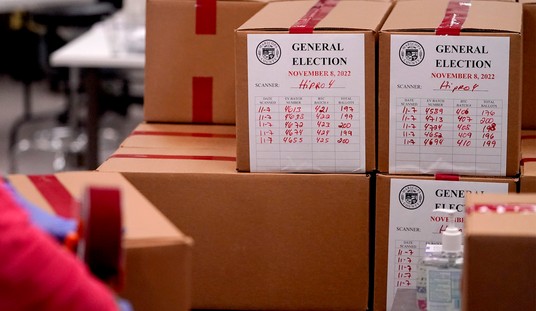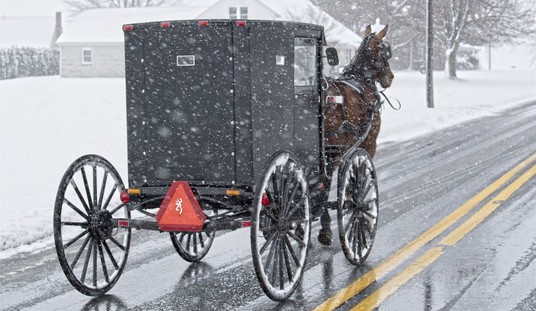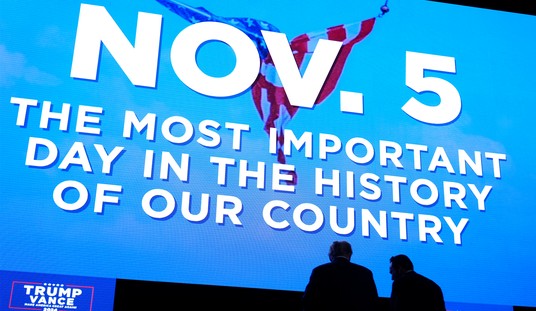Hot questions, timely topics, timeless principles. Welcome to Townhall Magazine’s July 2013 issue! Check out an exclusive sneak peek of a few stories that made our pages, including our cover feature on military academy families.
Order Townhall Magazine today for these can't-miss articles:
--*Cover Story*: Choosing the military academies isn't just about education--it's a call to serve. Experience two families' journeys through military academy life. *Scroll down for an exclusive excerpt of the article!*
--“How Liberals Twist Language”: In recent history, we've seen the Left hijack and manipulate language to win battles. It's time the Right wakes up to the deception, writes Katie Pavlich.
--"10 Founding Fathers You've Likely Never Heard Of": Theirs was a manly cause, as many lost everything battling for American independence.
--"Hillary's Troubling Legacy": Hillary Clinton is currently the darling of Democrats and their 2016 hopes, but should she be? Her record should cause all Americans concern.
--"Life or Death in 30 Seconds": 30 seconds is usually the amount of time pro-life sidewalk counselors have to arm women with life-changing information.
--"Closing Argument": S.E. Cupp checks in with Rep. Paul Ryan.
Remember, our print features are generally 100 percent exclusive ... most won't run in full online!
Excerpted from Townhall Magazine's July cover story, "Called to Serve," by Marybeth Hicks:
July marks the launch of basic training at America’s five Federal Service academies—the United States Naval Academy at Annapolis, the United States Military Academy at West Point, the United States Air Force Academy at Colorado Springs, the United States Coast Guard Academy at New London, Conn., and the United States Merchant Marine Academy at Kings Point, New York.
Recommended
Each academy has its own lingo and its own traditions for installing new servicemen and women. Induction Day—or “I Day,” as it’s known at Annapolis—is always July 1, a day of celebration and anticipation that starts with head shaving and uniform distribution and ends with tearful goodbyes from parents and families.
Similarly at West Point, “R Day” —for Reception Day—marks the start of six weeks of grueling cadet training that the Army calls “challenging,” though most of the people who go through it call it “hell.”
After a welcome ceremony for families and new cadets, the Air Force allows a full 90 seconds for families to say their goodbyes before whisking “Doolies” off to their new reality as Air Force trainees. The atmosphere is the same for Coast Guard cadets beginning “Swab Summer” and Merchant Marines entering plebe summer.
The start of these summer sessions, which last six or seven weeks and include exhausting physical training, rigorous military exercises and tedious hours of marching in the hot, summer sun, marks only a benchmark along a journey that, for some, began in childhood with dreams of attending an academy. What will follow are four years of equally challenging academic and professional training as America’s future military officers are molded to lead our armed services. ...
From the age of 14, Tyler Sharp wanted to be a Navy SEAL. Attending his brother’s college graduation, Tyler, the youngest of Lou and Brad Sharp’s three sons, mentioned to an aunt his fascination with the SEALs, and she encouraged him to pursue the US Naval Academy as a way to achieve his dream. “She told him the best route was to enter the academy,” recalls Tyler’s mother, Lou Sharp, “because no matter what he decided to do later, he would always have that great education.”
For most boys, a middle-school aspiration like becoming a SEAL morphs into something else—a dream of a professional sports career, or perhaps the notion of becoming an important political leader.
But not Tyler. The Williamston, Mich., teenager took that suggestion from his aunt, researched his goal, and set his sights on entering the Naval Academy. His parents simply went along for the ride on Tyler’s journey.
The only military connection in Tyler’s family was an uncle, retired Navy Capt. David R. Sharp.
“We weren’t a military family,” Lou says. “We raised our boys to respect this nation and love their country, but we didn’t push or even suggest that they join the military. That would have to come from them. So for Tyler to have this dream of being a SEAL at such a young age was all his idea.”
“The next step was to learn more about the Navy SEALS,” Lou remembers. “He was just a little guy, but he was always very driven. So I found a SEAL mom, a woman I knew in town, and her son came home to visit, so we took Tyler to see him. They talked for two hours and afterward I said, ‘Do you really want to be a SEAL and go to the Academy?’ And he said, ‘More than ever.’”
Tyler didn’t leave any part of his plan to fate. As a high school freshman, he learned exactly what achievements, skills and experiences the Navy would want to see in an applicant, and he set about fulfilling those requirements in his high school career.
“Tyler didn’t know anyone else who was pursuing a dream like his so figured out on his own what he needed to do. He found out that you need to be well versed in different things— you need to be a good speaker, a good leader. He was a great athlete—not the top star but an asset to any team. He figured he would need to know how to swim so he joined the swim team. He ran cross-country and track. He also wrestled because he thought that would be a good thing,” Lou says.
“He took science and math classes because he knew that would help him be prepared,” she recalls. “And then Tyler started doing triathlons because he knew that sort of activity would be important. He ended up being on the triathlon team at the academy and being the captain, but he didn’t know that would happen. His mind was set on all these different things that he knew he would need in order to become a SEAL.”
Applying for USNA’s Summer Seminar for rising high school seniors launched the entry process for Tyler. “He didn’t have a Plan B,” Lou says. “He never applied anywhere else for college and, to be honest, as parents, this made us a little crazy. But he was just determined that he would go to Annapolis, even if it meant taking a long route to get there.”
Unsurprisingly, a long route wasn’t necessary. In his senior year at Williamston High School, Tyler was nominated for appointment to the Naval Academy by GOP Rep. Mike Rogers as well as by Democrat Sen. Debbie Stabenow. He entered USNA on July 1, 2006, with uncharacteristically little fanfare.
“Tyler didn’t want a graduation party or any attention about going to the Academy,” Lou says. “It was always the means to end. It was the path to becoming a SEAL.”
That path seemed assured, given Tyler’s stellar career at USNA. Majoring in Oceanic Engineering—one of the academy’s most difficult courses of study—and captaining the triathlon team were only part of his duties. He also rose through the ranks of Midshipmen, serving as a “striper,” or battalion commander, in his First Class (senior) year.
As his USNA graduation approached, Tyler submitted his top preferences for placement, as all graduating Midshipmen must do. SEALs was still the goal; his No. 1 choice. Tyler’s second choice was Surface Warfare Officer (SWOs), another demanding and prized placement, to be sure, but not the dream he had pursued with such passion for 12 years.
But his dream would have to wait.


























Join the conversation as a VIP Member